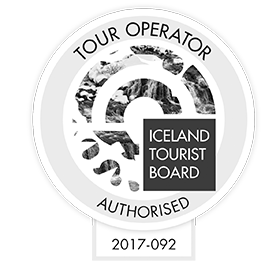- Vehicle Guide
- Passenger cars
- Estate
- Electric
- 4x4 SUVs
- Suzuki Jimny 4x4
- Dacia Duster 4x4
- Suzuki Vitara 4x4
- Suzuki Vitara auto 4x4
- Dacia Bigster 4x4
- Kia Sportage 4x4 Auto
- Kia Sportage PHEV 4x4 auto
- Mitsubishi Outlander PHEV 4x4 auto
- Toyota Rav4 4x4
- Toyota Rav4 4x4 auto
- Kia Sorento 4x4 auto
- Toyota Landcruiser 150 4x4 auto
- Toyota Landcruiser 250 4x4 auto
- Landrover Discovery 5 4x4 auto
- Landrover Defender 4x4 auto
- Prestige
- Minivans
- 4x4 Camper
- Motorhomes
- Driving in Iceland
- Our services
- Locations & Hours
- Travel Inspiration
- South Iceland: A complete guide
- Reynisfjara Beach in Iceland - Your Guide to a Safe Visit
- Best Times to Visit the Golden Circle in Iceland
- North Iceland: A Complete Guide for Drivers
- East Iceland A Complete Guide for Drivers
- West Iceland The Complete Driver’s Guide
- Your Ultimate Guide to Exploring Iceland’s Ring Road
- Driving the Diamond Circle in Iceland: Your Ultimate Guide
- Driving Iceland's Golden Circle: Your Ultimate Guide
- A 10-Day Itinerary in Iceland: Tips + Ideas
- The Perfect Itinerary for 7 Days in Iceland
- The Best Time to See the Northern Lights in Iceland with a Rental Car
- Renting a Camper in Iceland: The Complete Guide
- Getting to Iceland: A Comprehensive Guide on How to Reach the Land of Fire and Ice
- Nature Bath Locations in Iceland: A Complete Guide
- Iceland with Kids: A 5-Day Self-Drive Itinerary
- Winter Driving in Iceland: A Comprehensive Overview for Foreign Tourists
- The Total Solar Eclipse in Iceland – August 12, 2026
- Exploring Iceland's National Parks on a Self-Drive Adventure
- Exploring Iceland's Wonders: A Comprehensive Guide to Activities and Car Rentals
- Springtime in Iceland – Your Comprehensive Travel Guide
- Exploring Iceland's Most Popular Highland Routes
- The Pearls of Westfjords: The Ultimate Guide
- Exploring Iceland's Hidden Gems | Off-the-Beaten-Path Adventures
- Driving in Iceland in June: Tips for a Safe and Scenic Summer Road Trip
- Driving in Iceland in July: Tips, Routes & Rentals
- Driving in Iceland in August: Late-Summer Freedom on the Open Road
- Guide to Skaftafell Iceland Self-Drive A Journey Through Fire and Ice
- Eco-Friendly Road Trips in Iceland, Sustainable Travel Tips
- Photographer’s Paradise Top Scenic Drives in Iceland for Stunning Shots
- Iceland's Folklore and Legends A Road Trip Through Mythical Sites
- Iceland’s Midnight Sun and How to Make the Most of 24-Hour Daylight
- Exploring Iceland’s Viking Heritage: Top Historical Sites
- Chasing Waterfalls: A Road Trip to Iceland’s Most Spectacular Cascades
- Iceland's Volcanic Wonders: A Self-Drive Tour of Active and Dormant Volcanoes
- Tee Off in the Land of Fire and Ice: A Guide to Golfing in Iceland
- Birdwatching in Iceland: Puffins and Beyond
- Iceland’s Diverse Beaches: Beyond the Black Sands
- Icelandic Horses: The Unique Breed of the North
- Beyond the Ring Road: Iceland’s Hidden Scenic Drives
- Iceland’s Ice Caves: A Year-Round Adventure
- Wildlife Watching in Iceland: Where and When to Go
- Iceland’s Hidden Hot Springs: A Self-Drive Guide to Secret Soaks
- Navigating Iceland’s Weather: What to Expect Each Season
- Tröllaskagi Peninsula: Iceland’s Mountainous Marvel — A Scenic Road Trip with Höldur
- Mastering Iceland's Roundabouts: A Driver’s Guide
- Essential Tips for Renting a Car in Iceland
- Navigating Iceland’s One-Lane Bridges: Your Guide to Safe and Scenic Crossings
- Exploring Iceland’s Film Locations by Rental Car
- 5 Must-Visit Destinations Within Two Hours of Keflavík Airport
- Seasonal Car Rental Tips for Iceland’s Summer Festivals
- Understanding Iceland's F-Roads: How to Drive Safely Into the Highlands
- What Makes Iceland Unique: Top 15 Highlights for an Unforgettable Journey
- Driving and Hiking in Harmony: Explore Iceland's Natural Wonders with Höldur Car Rental
- Best Car to Rent in Iceland?
- Avoiding Common Car Rental Mistakes in Iceland
- Making Your Car Rental in Iceland Child-Friendly: Tips for Stress-Free Family Travel
- Exploring Akureyri, Iceland’s Northern Gem, with EasyJet and Europcar
- Renting a Manual or Automatic Car in Iceland
- Discover the Arctic Coast Way in Iceland with Höldur Car Rental
- How to Save on Fuel Costs During Your Iceland Road Trip
- Electric vs. 4x4 Rentals in Iceland: Which is Right for Your Trip?
- Top Scenic Detours Off Iceland's Ring Road
- Top Safety Tips for First-Time Drivers on Iceland’s Roads
- Cultural Pit Stops Along Iceland’s Ring Road
- Your Guide to Exploring Stuðlagil Canyon by Car: Iceland’s Basalt Beauty Awaits
- Day Trip Ideas From Reykjavik by Rental Car
- Visit Glymur Waterfall: The Ultimate Self-Drive Adventure from Reykjavík
- Discover the Volcanic Wonders of Lake Mývatn by Car
- Discovering the Magic of Snæfellsnes Peninsula by Car
- Your Self‑Drive Guide to Gullfoss Waterfall
- A Guide to Seljalandsfoss Waterfall in Iceland: Explore by Car
- Exploring Reykjanes Peninsula A Self Drive Guide
- Exploring Iceland Landmannalaugar by 4x4
- A Beginner's Guide to River Crossings in Iceland
- Best Car Rental Offers for Iceland’s Summer Adventures
- Your Self‑Drive Guide to Þingvellir National Park
- Your Ultimate Guide to Geysir, Iceland: All You Need to Know
- How to Pay for the Vaðlaheiðargöng Tunnel
- Your Guide to Visiting Jökulsárlón Glacier Lagoon
- The Diamond Beach in Iceland: A Sparkling Wonder Worth Visiting
- Parking fines in Iceland: how to pay and what to do if you receive one
- Where to find overnight parking in Reykjavík: a local’s guide for travellers
- How to park for free in Reykjavík: tips to save on your Iceland trip
- How to pay for parking in Reykjavík - A friendly guide for drivers in Iceland
- Game of Thrones Filming Locations in Iceland: A Self-Drive Guide
- How to Choose the Right Car Rental at Keflavík Airport
- Flying Within Iceland: Your Guide to Domestic Routes and Regional Airports
- Top 3 Must-See Attractions on Iceland's Golden Circle
- Hidden Gems Along the Golden Circle Route
- Your Essential Guide to Iceland: Currency, Culture, and Car Rental Tips
- How to Plan the Perfect Golden Circle Self-Drive Tour
- The Comprehensive Guide to Rental Car Sizes at Keflavik Airport
- Húsafell & Hallmundarhraun: Hidden Lava Field Adventures by Car
- Iceland Weather by Month: What to Expect and How to Drive Safely with Holdur Car Rental
- A Guide to Iceland’s Quirky Roadside Attractions
- Exploring Iceland’s Lava Tubes | Self-Drive Cave Adventures with Höldur Car Rental
- Coolcation in Iceland: Self-Drive Your Summer Escape to the North
- Driving Iceland’s Coastal Roads: A Guide to Lesser-Known Peninsulas
- Top Tips for Driving in Iceland Safely Year-Round
- The Best Rest Stops and Viewpoints Along Iceland's Ring Road
- Driving in Iceland in September: Embrace the Autumn Adventure
- Your Guide to Exploring Fjaðrárgljúfur – South Iceland’s Fairytale Canyon
- Explore Reykholt on a Self-Drive Tour in Iceland
- How to Choose the Right Insurance for Your Iceland Car Rental
- Hiking Múlagljúfur Canyon: Iceland’s Hidden Gem You Can’t Miss
- Understanding Iceland's Weather and How It Affects Driving Conditions
- Dyrhólaey: A Complete Self-Drive Guide to Iceland's Breathtaking South Coast
- Where to See Iceland’s Tectonic Plates Up Close
- Scenic Journey on Kjalvegur Road 35 Reykjavik to Akureyri
- Guide to Visiting Svartifoss with a Rental Car
- Kerið Crater Lake in Iceland: A Self-Drive Guide
- Your Complete Guide to Stokksnes, Iceland with a Rental Car
- Hengifoss Waterfall in Iceland: The Ultimate Self-Drive Guide
- Your Complete Guide to Visiting Skógafoss Waterfall with a Rental Car
- Into the Heart of Þórsmörk: Iceland’s Valley of Thunder
- Dynjandi Waterfall in Iceland: The Ultimate Self-Drive Guide
- Visiting Ásbyrgi Canyon in North Iceland by Car: A Complete Self-Drive Guide
- Driving in Iceland in October: Embrace the Autumn Transition
- Hraunfossar: Iceland’s Hidden Gem for Self-Drive Travellers
- Barnafoss Waterfall: Iceland’s Raging Cascade with a Legend
- Driving in Iceland in November: Your Complete Guide to a Spectacular Autumn Adventure
- Fishing in Iceland: All You Need to Know
- Öxarárfoss Waterfall in Iceland: A Self-Drive Guide with Höldur
- Life in Iceland: Essential Guide to Living in the Land of Fire and Ice
- People of Iceland - 12 Fun Facts About Icelanders
- Glaumbær Turf Houses: A Self-Drive Guide to Iceland’s Living History
- Húsavík: Whale Watching Capital of Iceland
- Svínafellsjökull Glacier: A Self-Drive Guide to Iceland’s Ice Giants
- Kirkjubæjarklaustur: A Historic South Coast Gem
- Vík í Mýrdal: South Iceland’s Coastal Treasure
- Namaskard: A Self-Drive Guide to Iceland’s Geothermal Wonderland
- Laufás Heritage Site: Where Iceland’s Past Lives On
- Navigating Iceland's Gravel Roads: Tips for a Safe and Smooth Drive
- Iceland's Best Stargazing Spots for Self-Drive Travellers
- Iceland's Best Picnic Spots: Scenic Stops for Self-Drive Adventures
- Top 5 Family-Friendly Hiking Trails Accessible by Rental Car
- 15 Tips for Travelling to Iceland
- How to Plan a Winter Photography Road Trip in Iceland
- Visiting Gljúfrabúi Waterfall — A Self-Drive Guide
- How to Spot Puffins in Iceland: A Self-Drive Adventure
- Your Essential Guide to Winter Tyres and Safe Driving in Iceland
- Iceland’s Most Active Volcanoes: A Self-Drive Guide
- Iceland’s Most Scenic Bridges and River Crossings: A Self-Drive Guide
- Iceland’s Most Instagrammable Spots for Self-Drive Travellers
- How Cold Is It in Iceland During Winter? A Self-Drive Guide
- Explore Dimmuborgir: A Self-Drive Guide to Iceland's Dark Castles
- The Ultimate Guide to Iceland’s Top 5 Waterfalls by Car
- Iceland’s Best Scenic Routes for Autumn Foliage: A Self-Drive Guide
- The Best Time to Visit Iceland for Self-Drive Travellers
- Self-Drive Adventures to Iceland’s Remote Lighthouses
- Selfoss Waterfall Self-Drive Guide: Explore Iceland Your Way
- All About the Icelandic Sheep
- Vestrahorn: A Self-Drive Guide to Iceland’s Stokksnes Peninsula
- Höfn, Iceland: The Lobster Town Self-Drive Guide
- Exploring Arnarstapi: A Self-Drive Guide
- A Guide to Iceland's Seasonal Foods for Your Road Trip
- Hverfjall Crater, Iceland: A Self-Drive Guide
- Self-Drive Guide to Visiting Askja
- A Self-Drive Guide to Visiting Kerlingarfjöll
- A Self-Drive Guide to Gunnuhver Geothermal Area
- Skriduklaustur, Iceland: A Self-Drive Guide to History & Culture
- Your Ultimate Guide to Visiting the Blue Lagoon in Iceland
- Borgarnes, Iceland: Top Things to Do & Self-Drive Guide
- A Guide to Glaciers in Iceland
- Car Rental Insurance in Iceland: What’s Usually Included, What’s Not & How to Choose
- Best Car Models for Iceland’s Terrain: Recommendations by Route
- Solo Traveller’s Guide to Self-Driving in Iceland
- Exploring Iceland’s Arctic Circle: What to See and Do
- How to Plan a Budget-Friendly Road Trip in Iceland
- The History of Iceland’s National Day: A Self-Drive Celebration
- Where to Spot Whales in Iceland: A Self-Drive Guide
- The Diamond Circle vs. The Golden Circle: Which Route is Right for You?
- Embracing a Greener Journey: Sustainability in Iceland
- Granni: A Self-Drive Guide to Iceland’s Neighboring Waterfall
- Háifoss: A Self-Drive Guide to Iceland’s Tallest Waterfall
- Iceland's Best Camping Spots for Road Trippers
- Gjáin: A Self-Drive Guide to Iceland’s Hidden Oasis
- Iceland's Hidden Waterfalls: Beyond the Tourist Trails
- Hjálparfoss: A Self-Drive Guide to Iceland’s Helping Falls
- Seasonal Self-Drive Itineraries in Iceland: What’s Open When?
- Kirkjufell: A Self-Drive Guide to Iceland’s Most Photographed Mountain
- Fjallabak Nature Reserve: A Self-Drive Guide to Iceland’s Rugged Highlands
- Hrafntinnusker: A Self-Drive and Hiking Guide to Iceland’s Obsidian Wilderness
- When to Visit Iceland: Northern Lights and Ice Caves vs. Hiking and Highland Adventures
- Visiting Laugarvatn Fontana Spa with a Rental Car: A Relaxing Icelandic Getaway
- Hvítserkur Rock: A Self-Drive Guide to Iceland’s Dragon of the North
- Skiing in Iceland: A Self-Drive Guide for Winter Adventurers
- Visiting the Mývatn Nature Baths by Car: A Self-Drive Guide
- Visiting Vök Baths in East Iceland: A Self-Drive Guide
- Visiting Skútustaðir Pseudo-Craters: A Self-Drive Guide
- Visiting Hljóðaklettar: A Self-Drive Guide on the Diamond Circle
- The Ultimate Guide to Exploring Reykjavik with a Rental Car
- Visiting Seljavallalaug: A Hidden Gem in South Iceland
- Guide to Sólheimajökull Glacier by Iceland Car Rental
- Eyjafjallajökull: Iceland’s Glacier Volcano
- Ísafjörður, Iceland: Your Ultimate Self-Drive Guide to the Westfjords
- What Continent is Iceland In? A Traveler's Guide
- Katla Volcano: A Guide to Iceland's Sleeping Giant
- The Magic of Icelandic Water: A Traveler's Guide
- A Guide to Exploring Akureyri by Rental Car
- A Self-Drive Guide to the Krafla Volcanic Region
- 12-Day Iceland Self-Drive: The Complete Itinerary
- Hekla Volcano: A Self-Drive Guide to Iceland's Gateway
- Visiting Deildartunguhver: A Self-Drive Guide to Europe’s Most Powerful Hot Spring
- Exploring Borgarfjörður: A Self-Drive Guide to West Iceland
- Exploring Stórurð: A Self-Drive and Hiking Guide to East Iceland
- Visiting the Forest Lagoon in North Iceland: A Self-Drive Guide
- Driving in Iceland in December: Embrace the Winter Wonderland
- Exploring Grábrók: A Self-Drive Guide to Iceland’s Volcanic Crater
- Exploring Látrabjarg: A Self-Drive Guide to Iceland’s Westernmost Point
- Iceland Car Hire Tips for UK Drivers: What You Need to Know
- 4-Day Iceland Winter Itinerary: The Best of the South
- Mount Mælifell: Iceland’s Emerald Volcano
- How Long to Drive Around Iceland? A Self-Drive Guide
- Driving in Iceland in January
- Exploring Djúpavík: A Self-Drive Guide to Iceland’s Remote Westfjords
- What to Wear in Iceland: Tips for Every Season
- Things to Do in Stykkishólmur: A Self-Drive Adventure Through Iceland’s Magical West
- The Secret Lagoon: Iceland’s Hidden Gem of Relaxation and Discovery
- The Silver Circle of Borgarfjörður: Your Ultimate Self-Drive Guide
- Snæfellsjökull: A Journey to Iceland’s Glacier of Legends
- Car Rental Iceland 4x4: Best 4WD Options for Your Trip
- What to See in Iceland: 20 Places You Don’t Want to Miss
- How to Prepare for an Iceland Road Trip
- Your Guide to Visiting Fagrifoss Waterfall by Car
- Exploring Stakkholtsgjá Canyon: A Self-Drive Adventure in Iceland
- Kolugljúfur Canyon: A Guide to Iceland's Hidden Gem
- Exploring Kvernufoss: A Hidden Gem in South Iceland
- Skógar Museum: A Journey Through Iceland's History
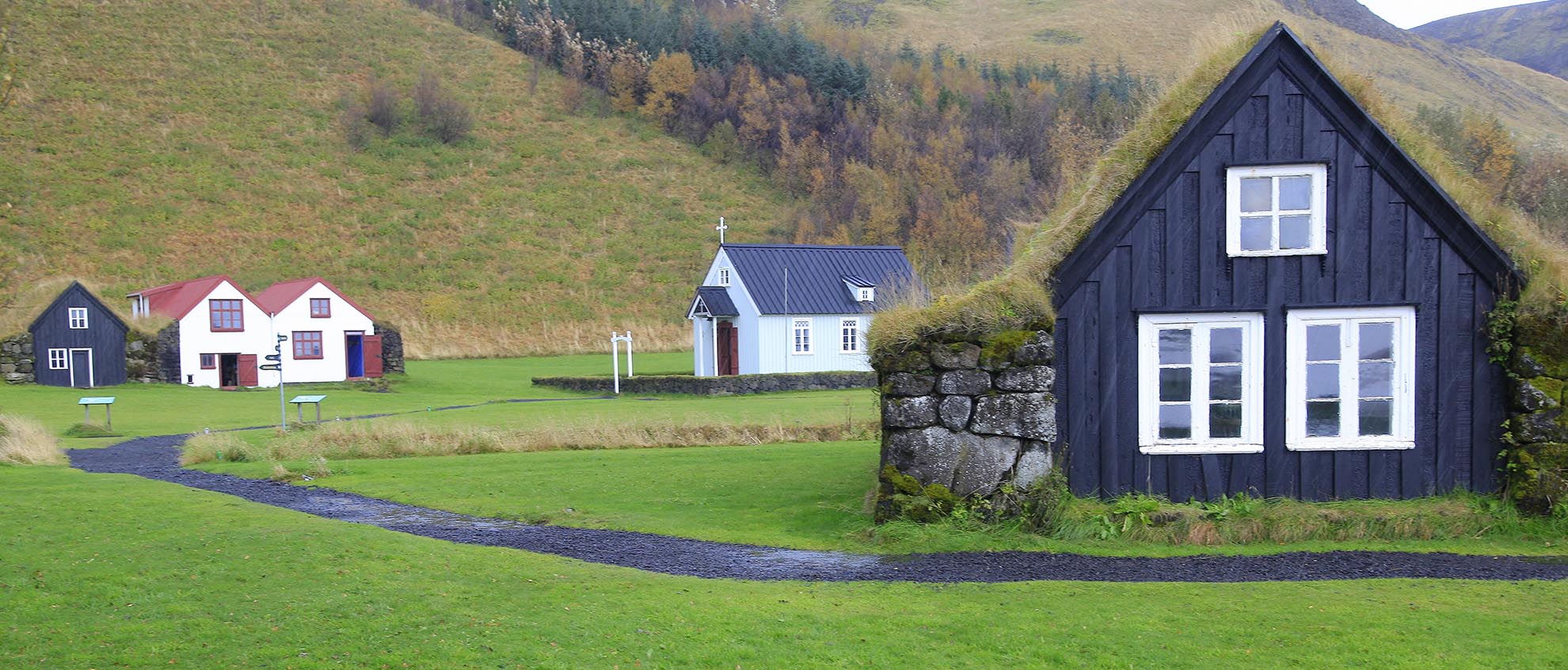
Cultural Insights
Skógar Museum: A Journey Through Iceland's History
21.11.2025
Iceland’s South Coast is a spectacular showcase of nature's power, featuring dramatic waterfalls, black sand beaches, and expansive glaciers. While driving this route, many travellers are drawn to the powerful cascade of Skógafoss waterfall. Yet, nestled just moments away is a destination that offers a different kind of wonder: Skógar Museum. This remarkable open-air museum provides a deep and engaging look into Iceland's cultural heritage, making it an essential stop on any self-drive itinerary.
For those exploring Iceland by car, Skógar Museum is more than just a collection of artefacts; it is a portal to the past. It shows how Icelanders lived, worked, and survived in a challenging environment for centuries. A visit here enriches your understanding of the country, adding historical context to the stunning landscapes you witness on your journey. This guide will walk you through what makes Skógar Museum a must-see attraction on your South Coast adventure.
What is Skógar Museum?

Skógar Museum, known in Icelandic as Skógasafn, is one of the country's most celebrated cultural institutions. Founded in 1949 by Þórður Tómasson, a passionate local historian, the museum began as a small collection in a school basement. Over seven decades, Þórður’s dedication transformed it into a sprawling complex that preserves the story of Icelandic life. His personal touch is still felt throughout the museum, which he curated until his passing in 2022 at the age of 100.
The museum is divided into three distinct sections, each offering a unique perspective on Iceland's history:
- The Open-Air Museum: A collection of historic buildings from across southern Iceland, relocated and reconstructed to create a traditional village.
- The Folk Museum: An indoor exhibition showcasing thousands of artefacts related to daily life, fishing, and farming.
- The Museum of Transport and Communication: A modern building dedicated to the evolution of travel, technology, and communication in Iceland.
A visit here offers a comprehensive experience, allowing you to step directly into the nation’s history.
Driving to Skógar Museum: A Key Stop on the South Coast
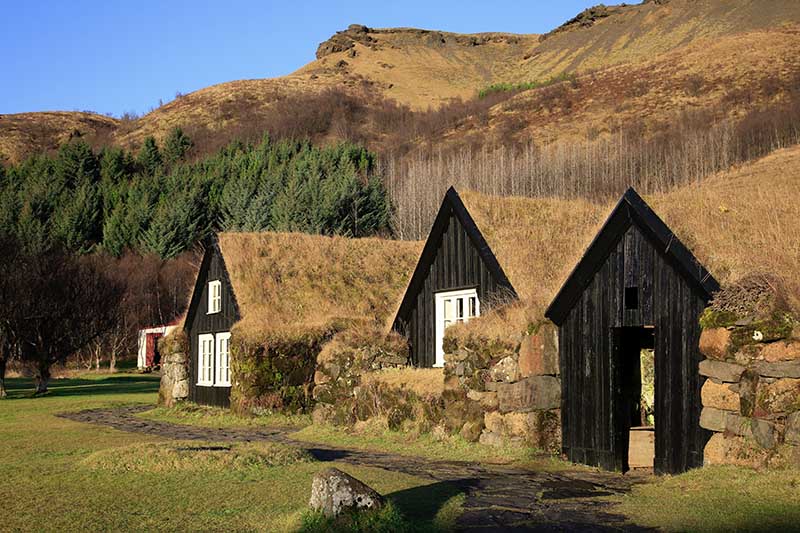
Skógar Museum is conveniently located in Skógar, a small settlement on Iceland’s South Coast, approximately 150 kilometres (93 miles) from Reykjavík. The drive along Route 1 (the Ring Road) is straightforward and takes about two hours without stops, but you will want to allow much more time to appreciate the journey.
From Reykjavík
Heading east from the capital, your drive will take you past charming towns like Hveragerði and Selfoss. The landscape quickly transforms, revealing views of distant volcanoes, including Hekla and the infamous Eyjafjallajökull. Key attractions on the way include the stunning waterfalls of Seljalandsfoss and Gljúfrabúi, where you can walk behind the curtain of water. Planning your self-drive trip with Höldur allows you the flexibility to explore these sights at your own pace.
Location and Practicalities
The museum is situated just off the Ring Road and is impossible to miss. It is located less than a kilometre east of the turn-off for Skógafoss waterfall. From the museum, you can also take a short hike to the stunning Kvernufoss waterfall, a hidden gem often overlooked by tourists. Ample free parking is available on-site, making it an easy and stress-free stop for those travelling by car. Its strategic position makes it a perfect addition to a day trip exploring the South Coast or as a planned stop on a multi-day Ring Road tour.
Exploring the Three Parts of Skógar Museum
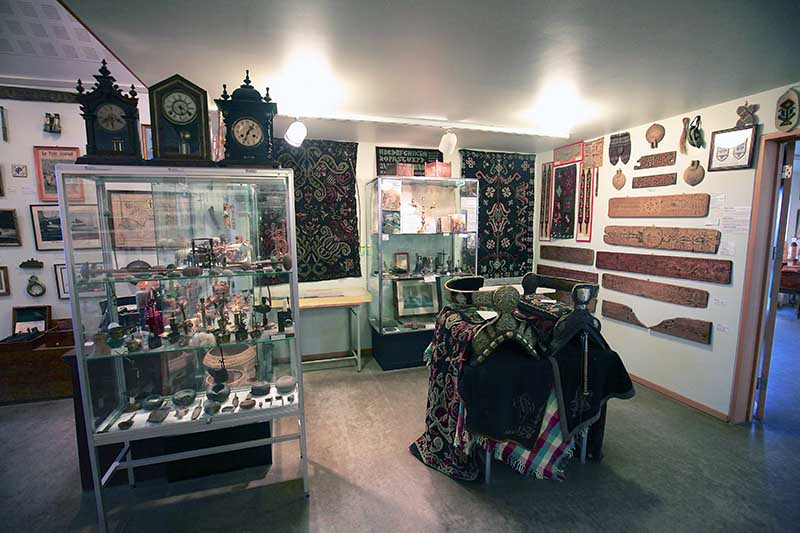
A visit to Skógar Museum is like taking three different tours in one. Each section provides a fascinating and detailed look at a different aspect of Icelandic heritage. Plan to spend at least two to three hours here to fully appreciate everything it has to offer.
1. The Open-Air Museum: Stepping into the Past
The Open-Air Museum is perhaps the most captivating part of Skógasafn. Here, you can wander through a collection of meticulously preserved historical buildings, including traditional turf-roofed farmhouses, a church, and a schoolhouse. These structures were carefully dismantled at their original locations and reassembled on the museum grounds.
As you step inside these buildings, you are transported back in time. The turf houses, with their thick, insulating walls and grassy roofs, demonstrate the ingenuity of early Icelanders in building homes that could withstand the harsh climate. You can explore the living quarters, kitchens, and sleeping areas, which were often shared by multiple generations of a family.
The highlight for many is the Skógar Church. This wooden church, consecrated in 1998, is a beautiful reconstruction of a traditional Icelandic design, complete with an ornate altarpiece and classic architecture. The schoolhouse offers a glimpse into rural education in the early 20th century. Walking through this recreated village provides a tangible connection to the people who shaped modern Iceland.
2. The Folk Museum: Artefacts of a Bygone Era
The main building of the Folk Museum houses an incredible collection of over 18,000 artefacts. This section is a testament to Þórður Tómasson's lifelong mission to preserve every aspect of Icelandic culture. The exhibits are thoughtfully organised into themes, covering everything from fishing and agriculture to textiles and domestic life.
Here, you can see a wide array of tools used for farming, historic fishing equipment (including a full-sized fishing boat), and traditional clothing. The displays are rich with detail and provide context on how these items were used in daily life. You'll find beautifully carved wooden chests, intricate embroidery, and everyday household items that tell the story of a resourceful and resilient people. This section offers a deep dive into the skills and crafts that were essential for survival and community life in Iceland for centuries.
3. The Museum of Transport and Communication
The newest addition to the complex is the Museum of Transport and Communication. This modern, multi-level building focuses on the technological advancements that transformed Iceland in the 19th and 20th centuries. For a nation defined by its isolation and challenging terrain, the development of transport and communication was revolutionary.
The exhibitions trace the evolution of travel, from walking and riding Icelandic horses to the arrival of the first automobiles and the development of a national road system. You can see vintage cars, trucks, and the machinery used to build the roads that now make self-drive tours possible. The communication section covers the introduction of the postal service, telegraph, telephone, and radio, highlighting how these technologies connected Iceland's scattered communities and linked the island to the rest of the world.
This part of the museum provides an important bridge between Iceland's past and present, showing how innovation and perseverance overcame immense natural obstacles.
Why Skógar Museum is an Essential Self-Drive Stop

Incorporating Skógar Museum into your self-drive itinerary offers numerous benefits. It breaks up a day of sightseeing with a rich cultural experience and provides a deeper appreciation for the country you are exploring.
Educational and Inspiring: The museum tells a powerful story of human resilience. Understanding the history of the Icelandic people adds a profound layer to the dramatic scenery you encounter on your drive.
Convenient Location: Situated directly on the Ring Road between Seljalandsfoss and Vík, it fits seamlessly into any South Coast itinerary. It’s a perfect activity for a rainy day or as a complement to visiting nearby Skógafoss.
Suitable for All Ages: The diverse exhibits appeal to visitors of all ages. Children are often fascinated by the turf houses and vintage vehicles, while adults will appreciate the historical depth and detailed displays.
Authentic Cultural Experience: Skógar Museum is not a tourist trap; it is a genuine and lovingly curated institution. It offers an authentic glimpse into the soul of Iceland, curated by someone who dedicated their life to preserving it.
Plan Your Visit

To make the most of your visit to Skógar Museum, consider the following tips:
- Combine with Skógafoss: The museum and the waterfall are just minutes apart. You can easily visit both in a few hours. Consider visiting the waterfall first and then heading to the museum for a relaxing and educational afternoon.
- Check Opening Hours: The museum is open year-round, but hours vary by season. Always check the official Skógar Museum website for the most current information before you travel.
- Wear Comfortable Shoes: You will be doing a fair amount of walking, especially in the open-air section.
- Give Yourself Enough Time: Rushing through the museum would be a disservice. Allow at least two to three hours to explore all three sections without feeling hurried.
A self-drive tour of Iceland is about more than just seeing the sights; it is about connecting with the land and its history. Skógar Museum offers a unique opportunity to do just that. It stands as a proud guardian of Iceland's heritage, inviting you to step out of your car and into the story of a nation.
Frequently Asked Questions (FAQs)
How much time should I allocate for a visit to Skógar Museum?
We recommend setting aside at least 2 to 3 hours for your visit. This allows enough time to explore the Open-Air Museum, the Folk Museum, and the Museum of Transport and Communication without feeling rushed.
Is Skógar Museum accessible for people with mobility issues?
The indoor Folk Museum and the Museum of Transport are generally accessible, with ramps and lifts available. The Open-Air Museum features gravel paths and historic buildings with narrow doorways and steps, which may present challenges for visitors with limited mobility.
Can I buy tickets in advance?
Tickets are typically purchased upon arrival at the museum’s reception. Pre-booking is generally not required for individual travellers or small groups. For the latest information on ticketing, it is best to consult the museum's official website.
Is there a café or restaurant at the museum?
Yes, there is a small café on-site offering light refreshments, such as coffee, tea, and pastries. For a full meal, there is a hotel restaurant adjacent to the museum and other options available in the village of Skógar.
Is the museum suitable for children?
Absolutely. Skógar Museum is very family-friendly. Children often enjoy exploring the turf houses, seeing the old cars in the transport museum, and discovering the various historical artefacts. The open spaces also provide room for them to move around.
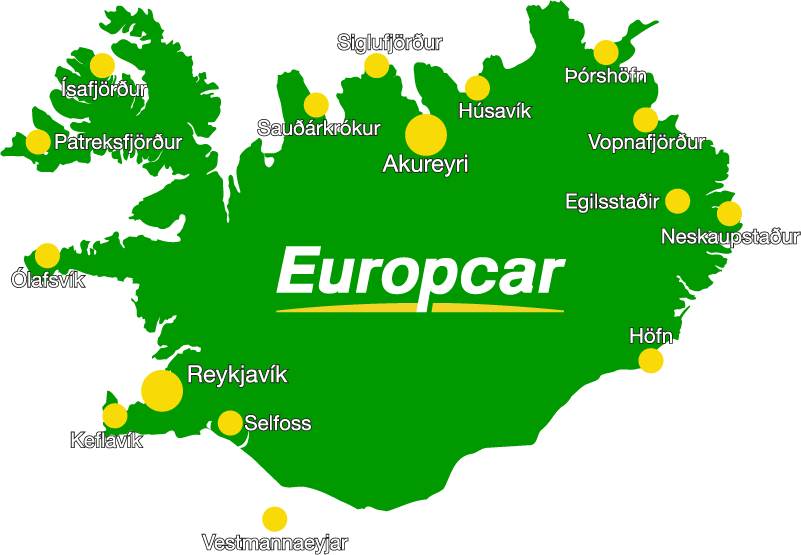
Your Trusted Partner for Car Rentals in Iceland
Planning to explore Iceland? Höldur is your go-to car rental partner, offering reliable vehicles and expert support to ensure your journey is smooth and unforgettable. With over 50 years of experience, we know Iceland’s unique terrain and can help you choose the best rental car for your trip, whether you're driving the Golden Circle or venturing into the Highlands.
Our extensive network means help is never far away, and our convenient locations at Keflavik International Airport (right in the Arrivals Hall) and Central Reykjavik make starting your adventure effortless. Enjoy peace of mind with our modern, well-maintained, and environmentally friendly rental car fleet.
Whether you're looking for a compact car, a 4x4 for rugged terrain, or a spacious vehicle for family travel, Höldur has you covered. Choose Höldur Car Rental for a safe, reliable, and memorable Icelandic road trip experience.
Book your car rental in Iceland today!




